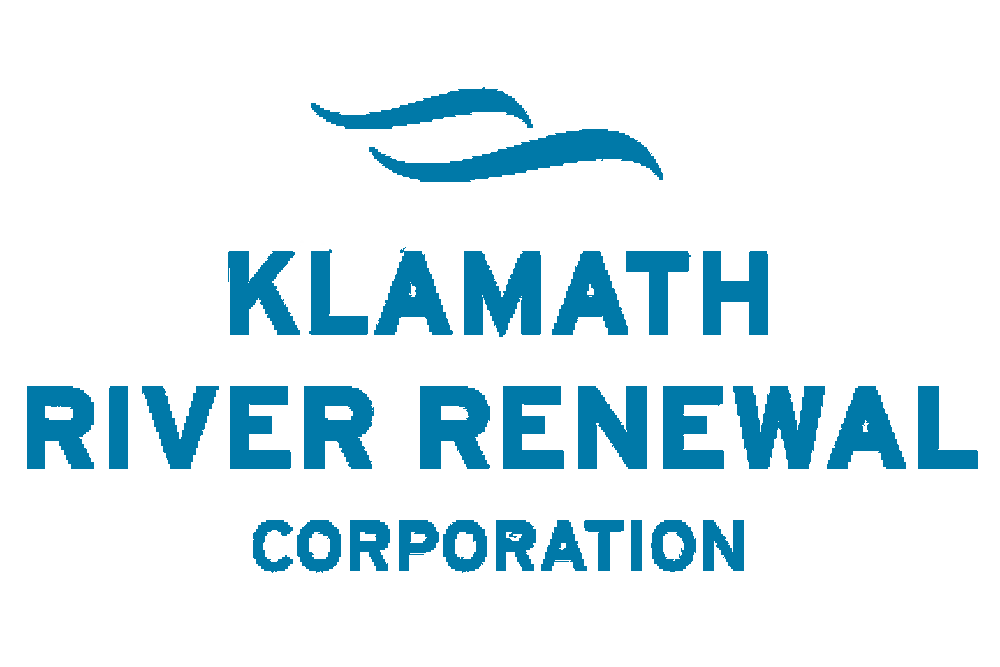FOR IMMEDIATE RELEASE
March 2, 2020
CONTACT:
Matt Cox, KRRC
(916) 847-6459 (cell)
matt@klamathrenewal.org
KLAMATH REGION – In a February 28 filing to the Federal Energy Regulatory Commission (FERC), the Klamath River Renewal Corporation (KRRC) submitted updated cost information, including the
“Guaranteed Maximum Price” (GMP) submitted by Kiewit Infrastructure West (Kiewit) and Resource Environmental Solutions, LLC (RES), and other requested material that further demonstrate KRRC’s capacity to become licensee for the Lower Klamath Project (Project). This filing is another concrete step toward implementing the Amended Klamath Hydroelectric Settlement Agreement (KHSA), removing the dams and restoring a free-flowing Klamath River.
“Our project is on track, within budget, and ready to roll,” said Mark Bransom, KRRC Chief Executive Officer. “This submission to FERC proves that we have the funding, the team, the expertise and the plan to do it right and pen a vibrant new chapter of Klamath River history.”
In the February 28 filing, KRRC again demonstrated that its committed funds are sufficient to complete dam removal as proposed in the license surrender application. The updated cost estimate for full dam removal that is based on the contractor-provided GMP is $446 million, which includes more than $50 million of contingency funding, making the project well within KRRC’s $450 million budget. The significant contingency funding is conservative and reflects widely accepted industry standards for complex infrastructure projects.
This updated total cost estimate reflects project contractor Kiewit Infrastructure West’s GMP of $199 million. The GMP is based on 60% design completion and integrates bids from more than 100 potential sub-contractors, including many local and tribal businesses. The $78 million GMP from RES includes restoration implementation and serving as the Liability Transfer Corporation. The GMP is the most accurate, complete and timely information available regarding construction and restoration costs, and providing long-term risk management.
The recent submission also includes revised contracting arrangements that add clarity and cost savings to the project; updated risk registers; insight into KRRC’s plans for a Local Impact Mitigation Fund to address potential damages to private properties; wildfire risk analysis assessment; and an updated insurance approach.
The insurance is part of a risk management program believed to be the most comprehensive ever considered by FERC for purposes of dam removal. In addition to insurance, the risk package includes performance bond and indemnity coverages to offset potential short- and long-term project effects.
In 2016, KRRC submitted license transfer and surrender applications to FERC, both of which are necessary for KRRC to take ownership of the four lower Klamath dams, remove them, and restore the river. In 2018, KRRC submitted to FERC its “Definite Plan,” a comprehensive, 2,300-page document that covered every aspect of its proposal, including plans for facilities removal, site remediation and restoration, estimated cost, and risk mitigation.
As part of the review process for KRRC’s Definite Plan, FERC directed KRRC to convene an independent Board of Consultants (BOC) to analyze KRRC’s work and provide feedback and suggestions. The BOC comprises experts in dam construction and removal, engineering, aquatic and terrestrial biology, construction cost estimating, insurance, and bonding for large infrastructure projects. The BOC has provided ongoing review and guidance on the dam removal project. They will culminate their comprehensive review of KRRC’s February 28 submittal in a report that will go to FERC in mid-March
“The KHSA represents years of negotiations, exhaustive scientific study, and compromise among the many groups who are all working together to improve conditions along the Klamath River,” said Bransom. “Healthy rivers breathe life into the communities they touch. Dam removal and a revitalized Klamath River will enhance resiliency to strengthen the entire Klamath watershed for the future.”
FERC will decide on the KRRC license transfer and surrender applications. KRRC anticipates beginning drawdown and removal as early as 2022, pending action by FERC and other regulators.
To view the KRRC filing, visit: www.klamathrenewal.org/definite-plan.
The Klamath River Renewal Corporation (KRRC) is an independent nonprofit organization founded in 2016 as part of the amended Klamath Hydroelectric Settlement Agreement (KHSA). KRRC is part of a cooperative effort to re-establish the natural vitality of the Klamath River so that it can support all communities in the basin. Signatories of the amended KHSA incude the states of California and Oregon, local governments, tribal nations, dam owner PacifiCorp, irrigators, and several conservation and fishing groups. KRRC was formed for the sole purpose of taking ownership of four PacifiCorps dams—J.C. Boyle, Copco No. 1 & 2, and Iron Gate—and then removing these dams, restoring formerly inundated lands, and implementing required mitigation measures in compliance with all applicable federal, state, and local regulations. KRRC’s work is funded by PacifiCorp customer surcharges and California Proposition 1 water bond funds.
KRRC values transparency and cooperation with all stakeholders and is committed to working with residents and governments to minimize any nuisance or negative impacts while enhancing the project’s local benefits.
